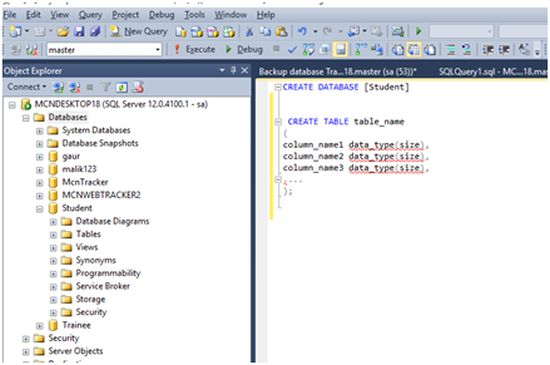What is RDBMS?
Question 3: What is PL/SQL?
Answer 3: PL/SQL Control Statements in Oracle.
Control Statements,
Answer 3: PL/SQL Control Statements in Oracle.
Control Statements,
- Control statements are very important in PL/SQL.
- Control Statements are elements in a program that control the flow of program execution.
- The syntax of control statements are similar to regular English and are very similar to choices that we make every day.
- Branching statements are as follows:
- If statement
- If - THEN - ELSE
- Nested IF
- Branching with logical connectivity
- While
- For Loop
If statement Syntax:
Click on the following link to read further.
Click on the following link to read further.
Question 4: What is the difference between SQL and PL/SQL?
Answer: SQL: It is referred as Structured Query Language.
Answer: SQL: It is referred as Structured Query Language.
- Only simple IF / Else statements.
- Through SQL you can interact with database through ADO.NET
- In SQL you can execute a line of code
- It can run only on windows
PL/SQL: It is referred as Procedure Language / Structure Query Language: - In PL/SQL you can execute a block of code not a single line of code.
- Deep control statements
- It can run in UNIX also.
- PL/SQL language includes object oriented programming techniques such as encapsulation, function overloading, and information hiding (all but inheritance).
Click on the following link to read further:
Question 5: What is RDBMS?
Answer: RDBMS: It is referred as Relation Database Management Systems (RDBMS).
RDBMS possesses a set of the below given characteristics:
Answer: RDBMS: It is referred as Relation Database Management Systems (RDBMS).
RDBMS possesses a set of the below given characteristics:
- Write-intensive operations: The RDBMS is frequently written to and is often used in transaction-oriented applications.
- Data in flux or historical data: The RDBMS is designed to handle frequently changing data. Alternatively, RDBMS can also store vast amounts of historical data, which can later be analyzed or "mined".
- Application-specific schema: The RDBMS is configured on a per-application basis and a unique schema exists to support each application.
- Complex data models. The relational nature of the RDBMS makes it suitable for handling sophisticated, complex data models that require many tables, foreign key values, complex join operations, and so on.
- Data integrity: The RDBMS features many components designed to ensure data integrity. This includes rollback operations, referential integrity, and transaction-oriented operations.
Click on the following link to read further:
Question 6: What is a database table?

Comments
Post a Comment